Email Marketing Segmentation: The Complete Guide
Have your email marketing efforts yielded notable results? Don’t give up if your answer is no. Email marketing has allowed businesses to engage with our customers on a more personal level. Although you may believe that social media is the best medium for engaging and interacting with your audience, email still reigns supreme.
By segmenting your audience, you can send useful content to the particular individuals for whom it was created. Rather than sending a single email to your entire email list, segment your audience and fill their inboxes with personalized content they want to read.
Each of your subscribers has a unique relationship with your brand, and it is critical that you tailor your content to those unique dynamics. In this article, we will provide you with a practical guide to audience segmentation that you can use to better divide up your audience based on your specific business.
What is email segmentation?
Segmentation is the practice of splitting your contact list into groups based on shared characteristics. If your list has been segmented, you can quickly and easily send customized emails to each section.
You can segment your email subscriber list into as many segments as you need, and a contact can be put into more than one segment. Lisa from New Jersey, for example, could be on your Northeast United States list, your new subscriber list, and your mid-range spending target list. She will receive emails sent to each of these segments, as well as emails sent to your entire email list.
Why should you segment your email marketing?
Email marketing is one of the most effective resources at your disposal. It’s your best bet for specifically reaching out to consumers, and it’s still a primary source of ROI for many marketers. Customers, on the other hand, do not want to read emails that sound canned or generic – and they definitely do not want to be spammed.
Individual emails to the entire contact list are clearly out of the question – but email segmentation helps you to customize content to your customers’ needs and preferences while also automating your email marketing.
You can group customers that share similar characteristics and send each group an email that feels personalized despite reaching hundreds or even thousands of people. Here are some ways you could segment your email list to ensure that your customers receive content that is tailored to their specific tastes and needs.
9 Best practices for email marketing segmentation
1. Demographics

Demographics, such as gender, age, profession, language, business, or geographic location, are one of the easiest ways to segment your email list. You can customize your copy, deals, and product reviews to customers based on the unique characteristics of each group, making your email more personalized to the reader. If you have customers in the Netherlands, for example, you might sell a product that is more likely to appeal to them than to customers in Germany.
You can gather this data when customers opt in for your email list or with a survey that they need to complete in exchange for a discount or an informative PDF.
2. Email engagement rate
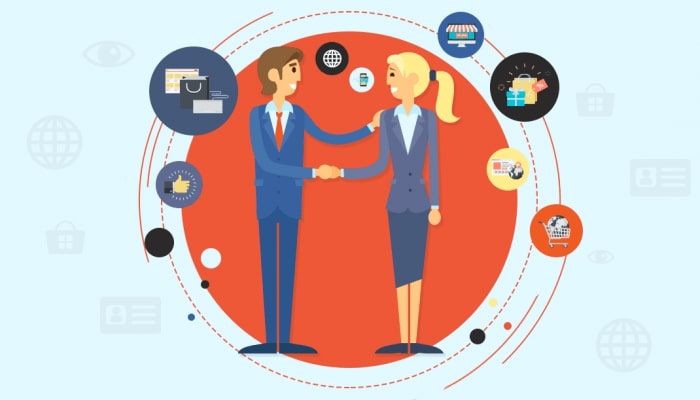
When it comes to email marketing, you want to make sure you’re striking the correct balance in terms of how many emails you’re sending. You want to keep your customers interested without bombarding them with emails. Instead of trying to find the right line for every single one of your subscribers, why not give them as many emails as they want to receive?
Segmenting your list based on email engagement rate will assist you in providing your subscribers with the frequency they want – no more, no less. If anyone opens your emails more often, give them more regular notifications and messages. Check in less often for larger sales and events if someone only opens one email every few months.
3. Spending budget

Another excellent way to segment the marketing activities is to segment subscribers with different levels of spending budgets. If a customer has a large sum of money to spend with you, you can go all out with what your company has to give them. However, if their budget is a little tighter, you don’t want to show them things that are prohibitively costly.
Examine prior sales histories and divide your subscriber base into tiers based on average purchase amounts. Focus emails for consumers who purchase one or two smaller ticket products on sale events, goods that provide a lot of bang for their buck, and exclusive discount codes. Show off your package pricing, top-of-the-line products, and new launches for the higher budget levels.
4. Past purchases

What your customers have already purchased from you is one of the greatest sources of knowledge you have about them. Purchase history will tell you a lot about the problems your customers are facing, what they’re interested in, and how much they buy from you. Previous transactions can be a great way to segment your email list for more personalized messaging.
If a group of customers has previously purchased such goods, why not send out an email advertising similar products? You may also display them goods at a comparable price point that address similar needs. If they’ve made several purchases from your company, you might want to send out more regular emails to keep them up to date on the latest news.
5. New subscribers

You can even think about segmenting your list based on how recently a customer subscribed to your newsletters email. Since new subscribers are likely to be interested in learning more about your business, it might be a good idea to create an onboarding email sequence that piques their interest and engages them. They may have recently made a purchase, or they may have replied to an advertisement and wanted to learn more about you before making a purchase.
You’ll need to automate the process of updating the latest subscriber list on a regular basis. Make sure that when someone subscribes to your emails, they are automatically added to this list. You can also set up a rule to automatically delete subscribers from this list after a certain period of time of non-engagement, depending on the email marketing tool you use.
6. Location in your funnel
When a new lead contacts your company for the first time, they should be guided into a sales funnel designed to push them towards a purchase. Your funnel should guide them from exploration to interest to product details to purchase consideration. However, depending on where a customer is in the funnel, how you sell to them can differ.
Segment your email list according to where your subscribers are in the sales funnel. If they’ve only just started looking into your products, give them emails that reflect on how your products will help them solve their problems. Consider giving them discount deals or promotional rewards if they are in the consideration stage.
7. Date of last purchase
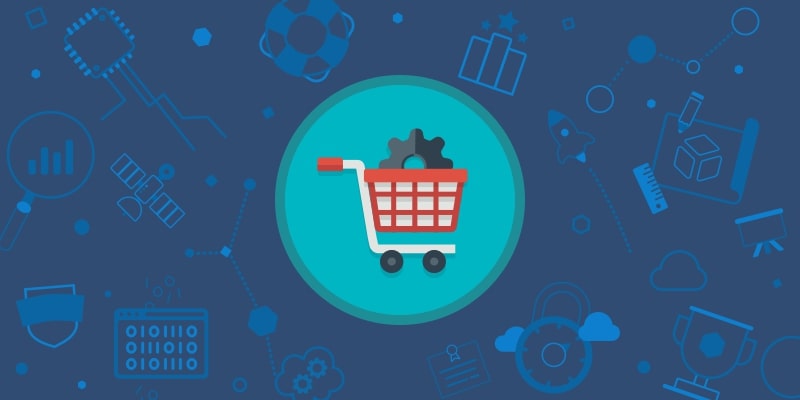
Segmenting the list based on when they made their most recent purchase is a perfect way to make emails feel more personalized to a customer. This, including the latest subscriber and sales funnel lists, will need to be revised on a regular basis.
Send a follow-up email, for example, if someone made a purchase in the last week, asking them to rate their experience with your purchasing process and your product. If they bought from you a few months ago, why not keep them up to date on the latest and greatest from your company? If they haven’t bought anything in a while, consider giving them an invitation to return and receive a discount or free gift with their next purchase.
8. Inactivity

If some subscribers have been inactive for a short period of time, notify them of the next step you want them to take. Subscribers who signed up for a free coaching appointment but did not follow through after two weeks are segmented by the Proctor Gallagher Institute.
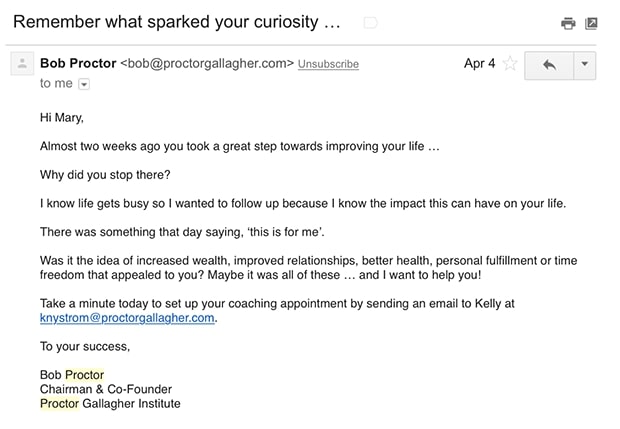
You may want to send a targeted email to subscribers who have been inactive for a longer period of time to see whether they still want to hear from you or if they’d rather unsubscribe. And, at some stage, you may want to unsubscribe subscribers that have been inactive for an extended period of time. This way, you can keep your list up to date.
9. Include a survey in your opt-in
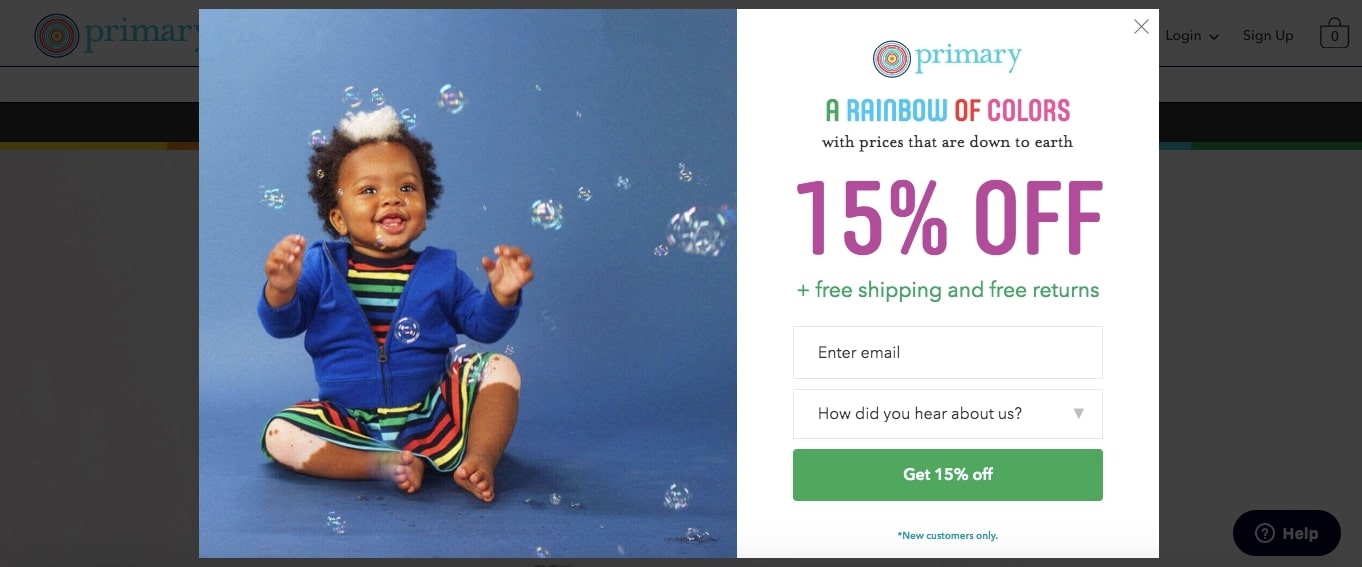
When new subscribers sign up for your email list, you can have them complete a short survey or quiz to help you learn more about who they are and what they want. Their responses will assist you in categorizing them and ensuring they receive targeted content.
For example, if you sell men’s, women’s, and children’s clothing, inquire as to which type of clothing they are interested in. As a result, the type of inventory they are looking for would be included in your email content for that particular customer.
There are many ways to tailor this approach to what your business has to offer. If you have a new blog or are looking for more conversions, there are questions you can ask your users to boost your marketing efforts. Let’s look at how you can structure your opt-in questions to support your email marketing plan.
What to ask in a opt-in survey:
When subscribers sign up for your email list, you will ask them a variety of questions. Rather than simply collecting their email address, ask a simple question that reveals a lot about your new customer. Here are some questions you should ask new subscribers when they sign up for your email list:
- What are their basic interests?
- What types of emails would they like to receive? (For example, special deals, what’s new, and newsletters) How often do they want to hear from you?
It could be a good idea to ask users how much they want to see you in their inbox. One of the most common reasons email users unsubscribe or report emails as spam is that they receive many too many. I believe we can all identify with this frustration.
By asking them this question, you will gain their confidence and they will appreciate the fact that you care. You’ll be more secure in your email volume and you’ll know they’re looking forward to your next piece of content after a certain period of time has passed.
Segment your email list with AVADA Marketing Automation
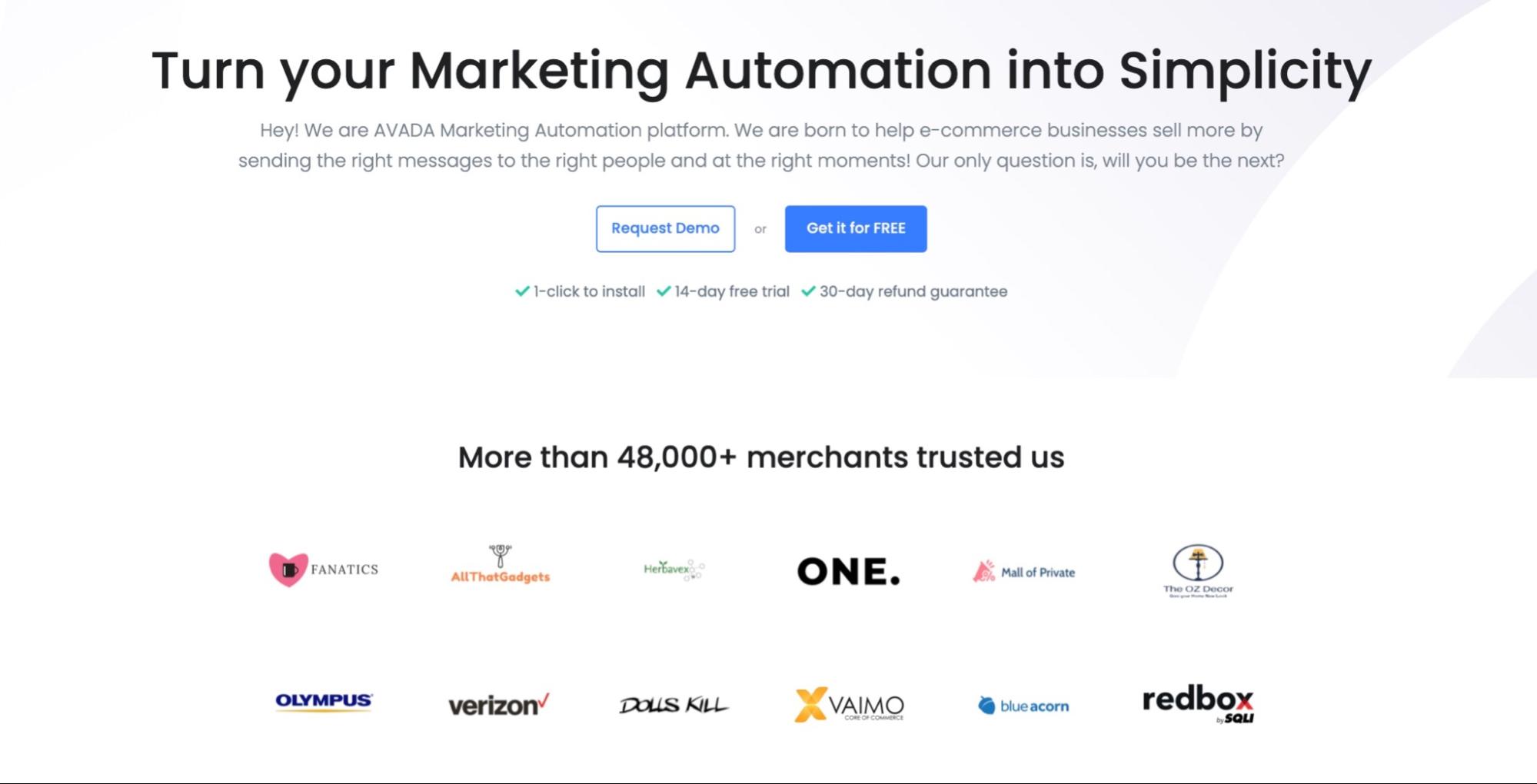
AVADA Marketing Automation is a multi-channel email and SMS marketing platform that can help you facilitate your email campaigns with its advanced features. Main features include:
- List segmentation
- Lead capture
- Abandoned cart saver
- Drag-and-drop email builder
- Email Automated workflows
- Advanced data tracking.
This tool is very suitable for startups and small businesses due to its user-friendliness and affordability. Paid plans start at $9/month for 1,000 subscribers, unlimited emails and full features. There’s a free forever plan for 15,000 emails and 1,000 subscribers that you can use to try out the app. Sign up now!
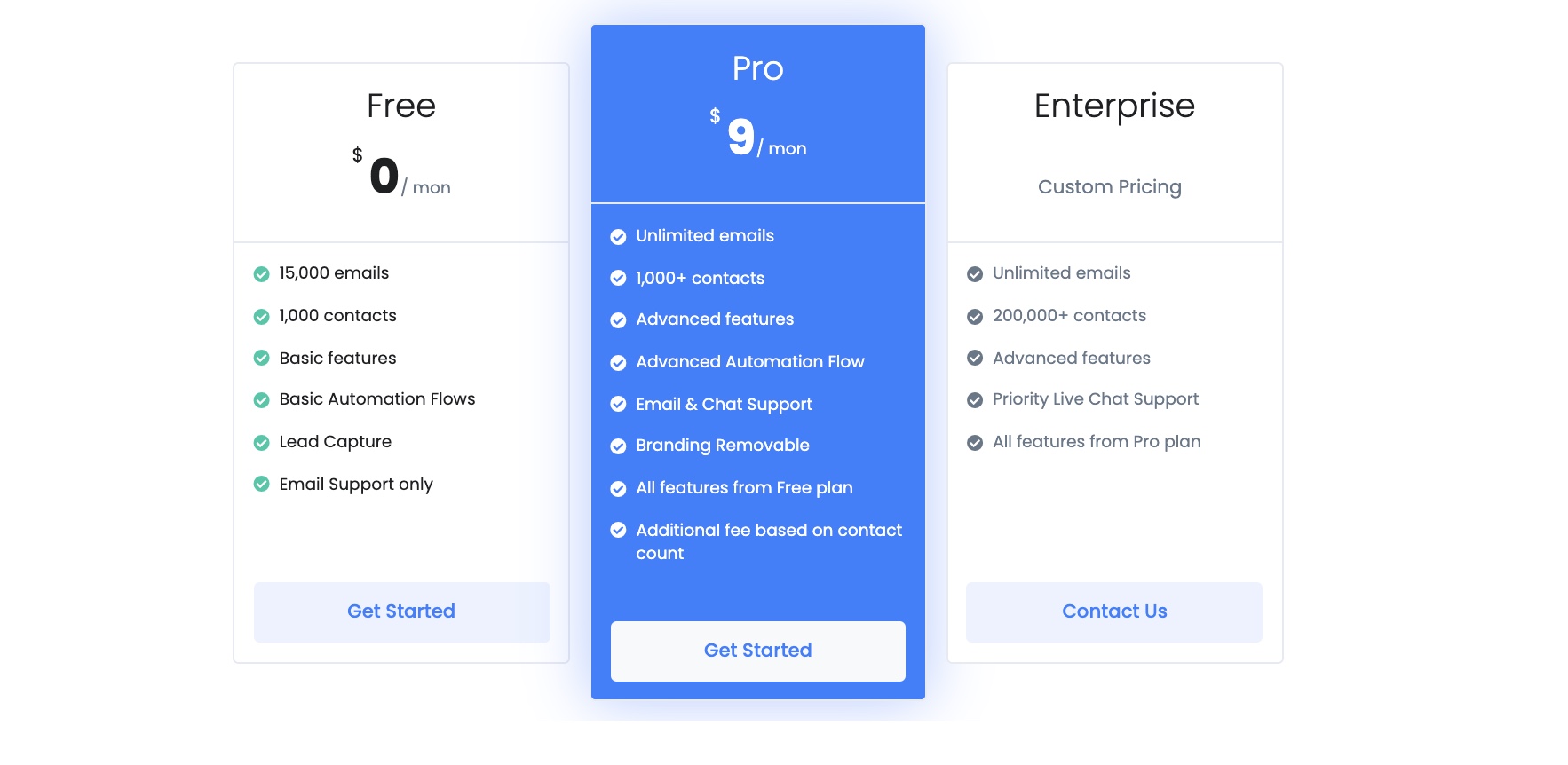
Final words
I hope this article has provided you with valuable knowledge about how to segment your email marketing list. Please feel free to leave comments below for further discussion on this topic!
New Posts







